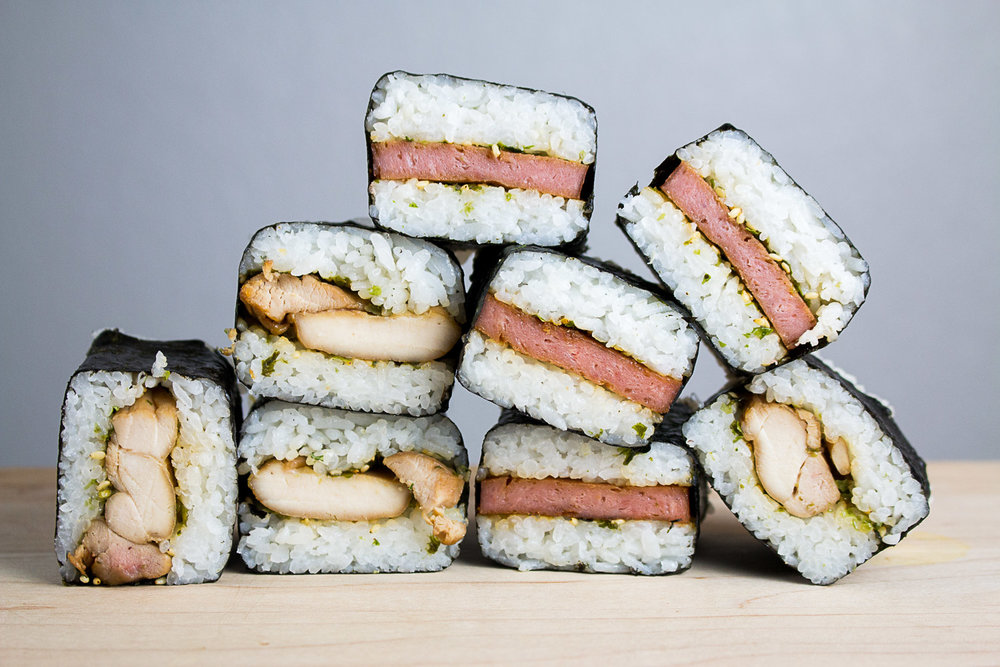The Ultimate Guide to Choosing the Best Rice for Musubi: A Detailed Analysis
When it comes to creating the perfect musubi, the type of rice you use plays a crucial role. The right rice can significantly enhance the flavor, texture, and overall experience of this delectable Japanese dish. In this comprehensive guide, we will explore the different types of rice available for musubi and help you identify the best rice for creating mouthwatering musubi that will leave you craving for more.
I. Understanding Musubi:
Before delving into the various rice options, let's briefly understand what musubi is. Musubi, also known as onigiri, is a traditional Japanese dish consisting of a rice ball filled or topped with various ingredients, often wrapped in seaweed (nori). Musubi is a popular snack, lunchbox item, or even a quick meal on the go.

Chicken and Spam Musubi
II. Characteristics of the Best Rice for Musubi:
1. Stickiness: The ideal rice for musubi should be sticky enough to hold its shape when pressed into a ball. The stickiness ensures that the rice holds together and allows for easy handling and eating.

Rice for Musubi
2. Texture: Musubi lovers prefer rice with a slightly chewy texture that adds an enjoyable mouthfeel to each bite. The right rice should have a pleasant balance between being tender and firm.
3. Flavor Absorption: Since musubi is often enjoyed with fillings or seasonings, it's crucial for the rice to absorb and complement these flavors without overpowering them. The rice should act as a canvas for the fillings to shine.
4. Moisture Retention: Musubi can be made ahead of time and consumed later, so it's essential to choose rice that retains its moisture without becoming soggy or dry when stored.
III. Types of Rice Suitable for Musubi:
1. Japanese Short-Grain Rice: This variety, commonly labeled as sushi rice, is the most popular choice for musubi due to its stickiness and texture. Short-grain rice has a higher starch content, resulting in a sticky consistency that holds the rice ball shape well.
2. Calrose Rice: Originating in California, Calrose rice has medium-sized grains and offers a soft, sticky texture when cooked. It is a versatile rice variety widely used for musubi due to its ability to absorb flavors effectively.
3. Koshihikari Rice: Considered one of the finest Japanese rice varieties, Koshihikari rice is known for its delicate flavor and tender texture. It retains moisture exceptionally well, making it an excellent option for musubi.

Koshihikari Rice
4. Botan Rice: Grown in the Sacramento Valley of California, Botan rice is known for its short, plump grains. It provides a pleasant chewiness and sticky consistency, making it a popular choice for musubi enthusiasts.
IV. Cooking Techniques for Perfect Musubi Rice:
1. Rinse the Rice: Before cooking, rinse the rice under cold water until the water runs clear. This step removes excess starch and ensures a cleaner taste.
2. Proper Water-to-Rice Ratio: Follow the instructions on the rice packaging to achieve the ideal water-to-rice ratio. Generally, it is recommended to use 1:1.1 to 1:1.2 water-to-rice ratio for musubi rice.
3. Cooking Methods: Cook the rice using a rice cooker or stovetop, following the instructions for the specific rice variety being used. The rice should be cooked until tender but not overly soft.
4. Seasoning the Rice: After the rice is cooked, gently mix in a sushi vinegar mixture to add flavor and enhance the taste of the musubi.

Rice mixed with sushi vinegar
V. Additional Tips and Considerations:
1. Storage: If you plan to make musubi in advance, store the cooked rice in an airtight container or wrap individual rice balls tightly in plastic wrap to maintain freshness.
2. Experiment with Fillings: Musubi offers endless possibilities for fillings such as grilled Spam, teriyaki chicken, pickled vegetables, or even spicy tuna. Don't hesitate to get creative and try different combinations!
3. Presentation: To elevate the visual appeal, consider using a musubi mold to shape the rice balls uniformly. The mold ensures a compact and aesthetically pleasing presentation.
VI. Conclusion:
Choosing the best rice for musubi is a critical step in creating a delightful culinary experience. Whether you opt for the traditional Japanese short-grain rice, Calrose rice, Koshihikari rice, or Botan rice, each variety offers unique qualities that contribute to the overall taste and texture of your musubi.
Remember to follow the proper cooking techniques, experiment with fillings, and savor the delicious results of your musubi-making adventure. Enjoy!